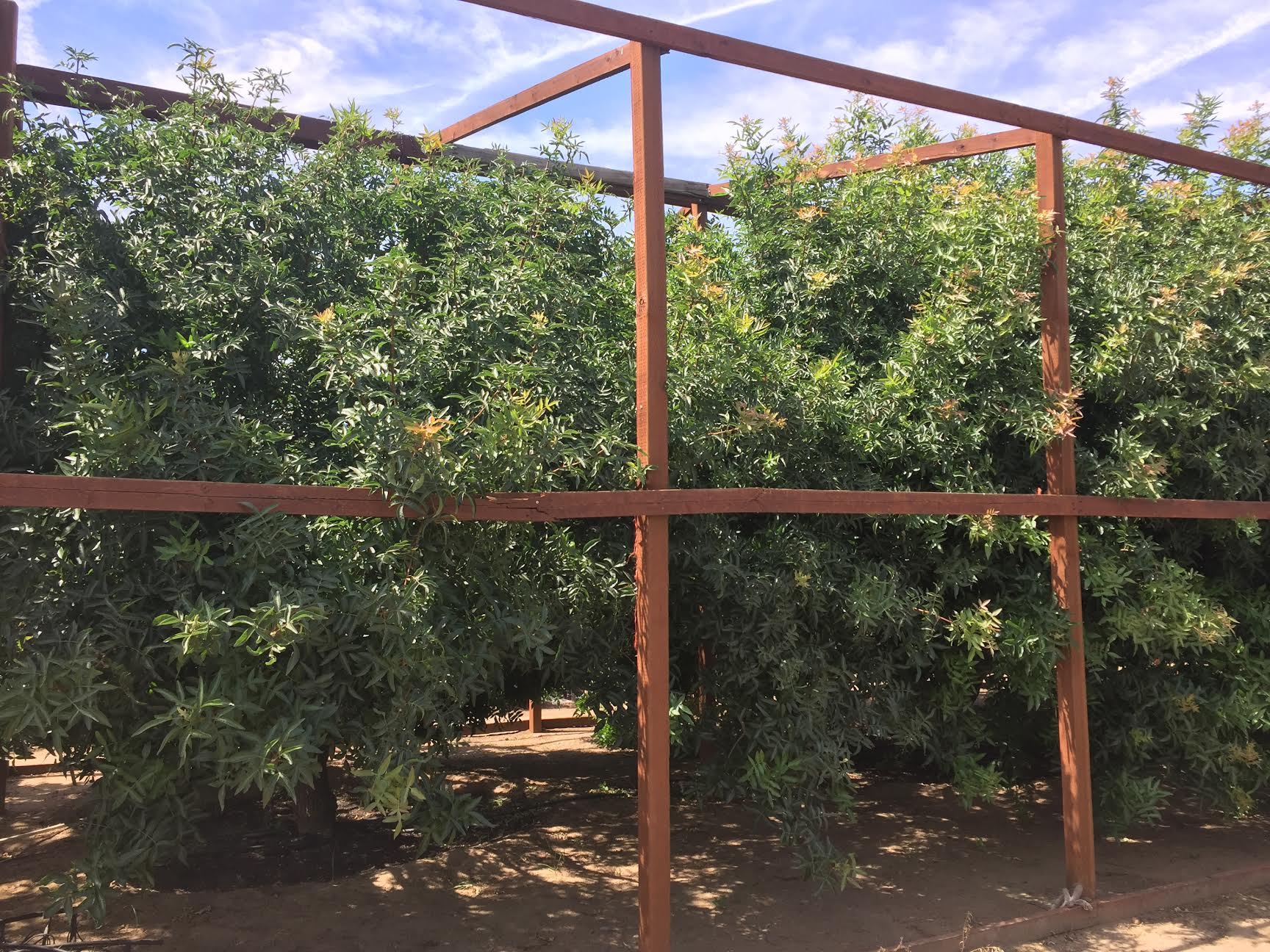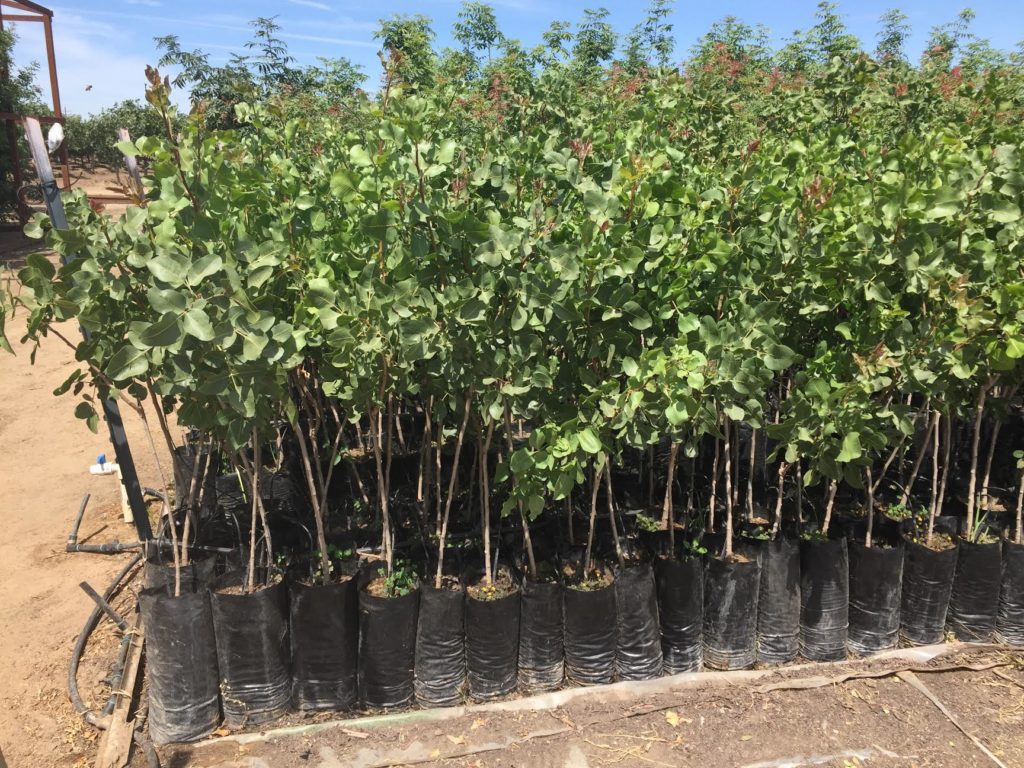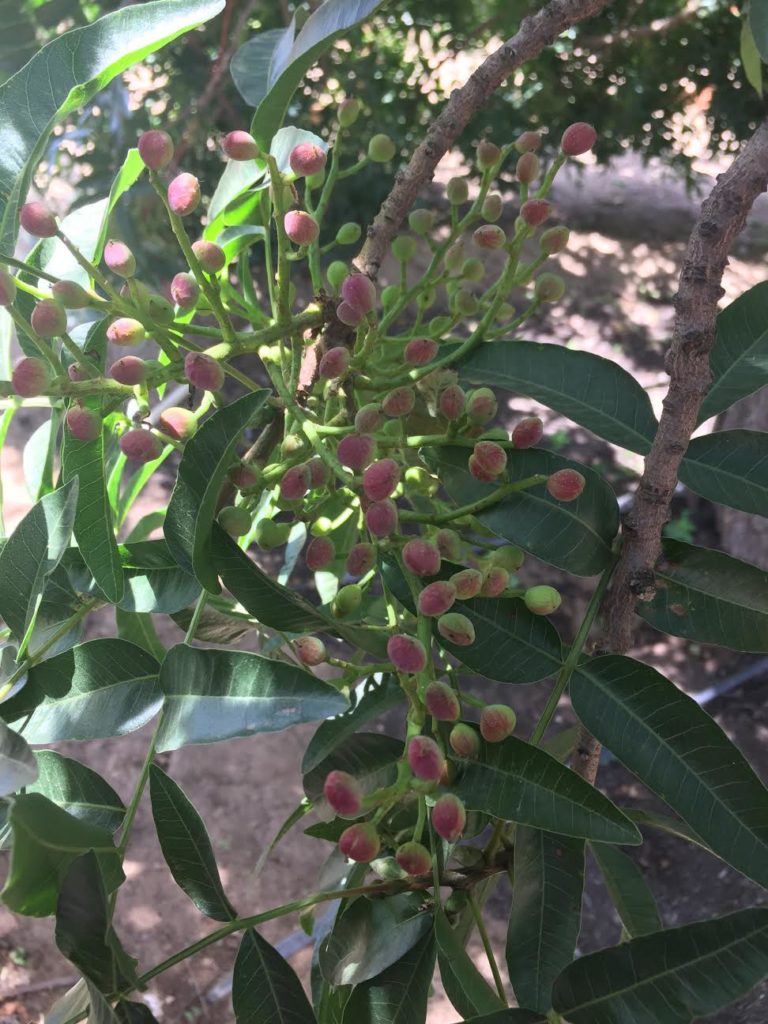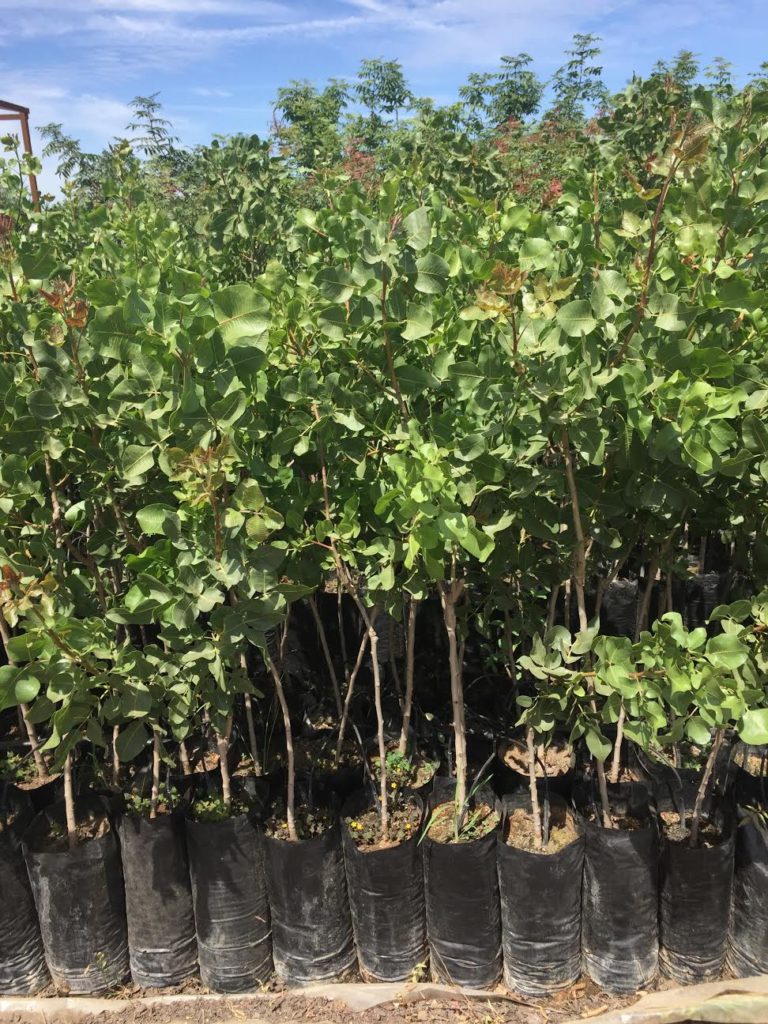
Interest in planting pistachio trees continues to grow in California, but many growers, even those with experience in pistachio production, may not be aware of all the basics of rootstock selection for their orchards. UCCE Tulare County farm advisor Elizabeth Fichtner said she receives many questions from new growers about pistachio rootstocks, including differences between seedlings and clones and how they are produced. Fichtner’s presentation at the annual Statewide Pistachio Day was directed at answering many of the questions and “demystifying rootstocks.”
In the past 10 years, Fichtner said, there has been an overlap in tree nut production, with walnut and almond growers moving into planting pistachios. The terminology used in rootstock production is not uniform across all nut crops and can be confusing to new growers.
Rootstocks comprise the roots and crown of trees and are selected for certain horticultural characteristics as is the scion that is grafted to the rootstock.
Fichtner said primary reasons certain pistachio rootstocks are chosen include freeze tolerance, disease or pest tolerance, adaptability to soil or water quality or horticultural qualities such as vigor. The scion variety is chosen for its horticultural qualities as well as disease resistance. A disease that may affect the scion may not affect a resistant rootstock.

Kern County pistachio growers realized the importance of rootstock disease resistance when many orchards were planted on former cotton ground that harbored the fungal pathogen Verticillium. Those early trees planted between 1969 and 1975 were on Pistacia atlantica and Pistacia terebinthus rootstocks, both sensitive to the Verticillium pathogen, which infects the roots and leads to flagging in the canopy where individual scaffolds collapse and tree death occurs.
The threat of this disease stopped all new planting until 1980 with the development of Pistacia integerrima or PG1 rootstock, which was resistant to Verticillium. That development provided new hope and momentum for pistachio growers, Fichtner said, but the challenge with P. integerrima was its sensitivity to frost.
Recent evidence of rootstock resistance to fungal infection was found in a 2018 farm call Fichtner made to a mature Golden Hills orchard. In that instance, she said, the scion was found to be infected with Phytophthora while the rootstock PG-1 was healthy. The infection was caused by irrigation water hitting the tree trunks above the graft union, Fichtner said. Had the water hit the rootstock, infection by this disease would have been less likely.
Most new pistachio orchards are planted in the spring. The most common routine in pistachio is to plant the rootstocks in the spring and bud them to the desired scion variety in August. Fichtner said budding done later in the year tends to have a lower success rate. This routine is different in walnuts. Young walnut trees are typically budded onto rootstocks in the nursery and then planted. She noted, however, that budded pistachio trees are sometimes sold and some walnut trees are budded in the field.
With pistachios, the T-bud is the most common method used to bud a pistachio scion onto the rootstock. The shield is cut from the budstick and inserted into a t-shaped cut on the rootstock.
Two different genotypes make up the genetics of a pistachio orchard. The scion Pistacia vera is one genotype and the rootstock is another. Pistachio growers in California use multiple rootstocks in their orchards. P. atlantica and P. terebinthus are no longer used due to the susceptibility to Verticillium. The pistachio industry is using two interspecies hybrids that have the same parentage. P. atlantica (male) crossed with P. integerrima (female) produces UCB-1 which is Verticillium resistant, frost tolerant and has salinity tolerance. The second interspecies hybrid is trademarked Platinum which is P. integerrima (male) crossed with P. atlantica (female) and is Verticillium resistant. Fichtner said both are vigorous rootstocks with excellent productivity.

The UCB 1 hybrid rootstock can be a clone or a seedling. Platinum is an interspecies cross that is clonally propagated. It was a selection from a seedling population chosen for Verticillium resistance and vigor. PG1 is from a single species and is a seedling rootstock. Fichtner said the USDA pistachio rootstock breeding program is working on new selections that might benefit the industry in the future.
Pistachio rootstocks are propagated sexually from seeds or asexually cloned using micropropagation. Seedling rootstocks, even if they were propagated from the same tree, will have genetic variability. Cloned rootstocks are genetically identical.
Each clonal line should have no variability.
Fichtner explained that Platinum is not available as a seedling rootstock because it was a specific selection generated from a seedling population that was chosen for its resistance to Verticillium and vigor. To maintain the desired characteristics of this selection, the Platinum rootstock is clonally propagated in tissue culture.
Pistachio trees are dioecious, meaning both male and female trees are required to produce a crop. The male flowers are born on one tree and the female flowers on another. The pollen from the male flowers is spread by wind. It is important that the male and female trees produce pollen and bloom in roughly the same time frame.
To produce UCB-1 seed for producing rootstocks, pollen is collected from P. integerrima and stored. The pollen is applied to an Atlantica female tree at bloom several weeks later. Because pollen is spread by wind, nurseries producing rootstock will have their female trees enclosed to ensure controlled pollination.

Choice rootstocks from seedling populations may be selected for asexual (cloning) propagation. Selections are made for vigor, disease resistance, compatibility with scion and tolerance to soil and water conditions. Clones are produced from seedling populations, selected for desired characteristics. This method can achieve a rapid multiplication of plants in a short time, allowing nurseries to meet the demand for new trees.
Pistachio rootstock tissue culture is used for rapid multiplication of plants. Axillary bud proliferation is one method of micropropagation with high reliability of genetic stability. Nurseries are using pre-formed buds from stems to generate new trees. This meristematic-based proliferation system ensures quality and a reproductive rate five times faster than seedling generation.
Clones are all derived from UCB seedling parents, Fichtner explained, but different nurseries made different specific selections from the genetically variable seedlings to produce rootstocks with the desired characteristics. There could be variability between clonal lines of UCB1, but there should be uniformity within clonal lines, Fichtner said.
Data on the various rootstocks used in the pistachio industry was derived from field trials from 1989 to 2002 at multiple sites in the San Joaquin Valley. The freeze episode of 1990 showed the rootstock Integerrima’s vulnerability to cold. Atlantica parentage associated with UCB1 and Platinum showed tolerance for cold temperatures. 2019 field trial being conducted by Bruce Lampinen and Mae Culumber at the West Side Research Station is looking at the influence of the last irrigation date on cold tolerance.

Cecilia Parsons
Cecilia Parsons has spent the past 30 years covering agriculture in California for a variety of newspapers, magazines and organizations. During that time she has been fortunate to witness some of the important events that have shaped this diverse industry and worked hard to examine and explain these events for readers.
When Cecilia first moved to the San Joaquin Valley in 1976, her first journalism job was at a small daily newspaper where she covered “farm news.” From there she branched out to writing for a dairy magazine and a regional weekly agriculture publication.
Cecilia is part of a farming family from the rural community of Ducor where she also raises purebred sheep and is attempting to master versatility ranch horse riding.










